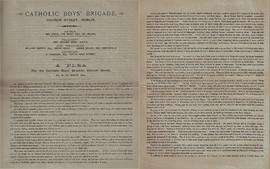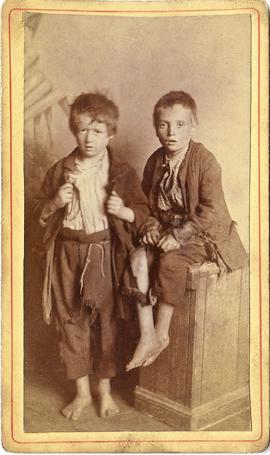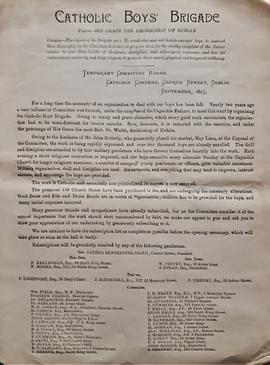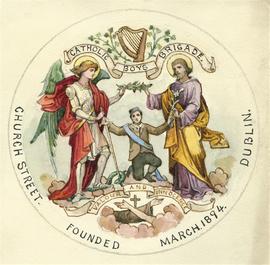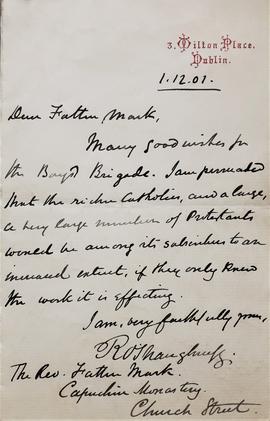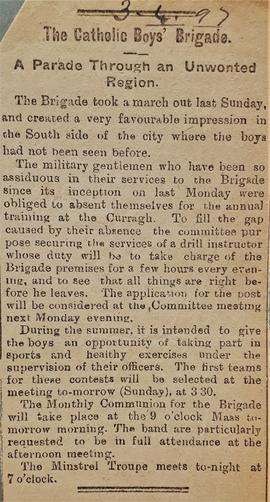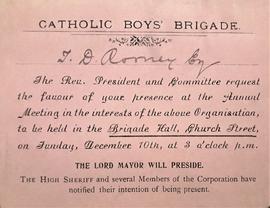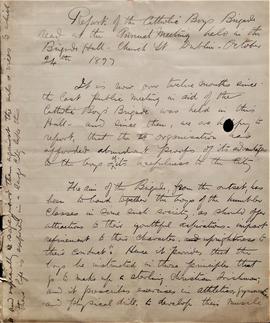A plea for the Catholic Boys’ Brigade, Church Street
- IE CA CS/5/1/17
- File
- c.1898
Part of Irish Capuchin Archives
A flier titled 'A plea for the Catholic Boy’s Brigade by E.D. Daly'. The flier refers to the good works performed by Boys’ Brigade members in the Church Street area and seeks subscriptions to aid the organisation. It reads: ‘At present Church Street is not quite up to the mark of its energetic past. The sites of several of its rookeries of wickedness are now covered by Police Courts, and by buildings in which Capuchins carry on their work. …. How long this breeding ground of sin and crime existed in the past must be left to imagination. What is certain is that this worst spot of the worst city in Ireland was selected by the Capuchin Order as a place in which to live, beside the poor, and to help them against temptations to crime and intemperance. To anyone who can feel for the poor, and understand evils around them which they do not realise themselves, the way to Church Street from Sackville Street is still like a descent into Hades, if traversed about 8 p.m. at this time of year’. The file contains three copies of the document.

